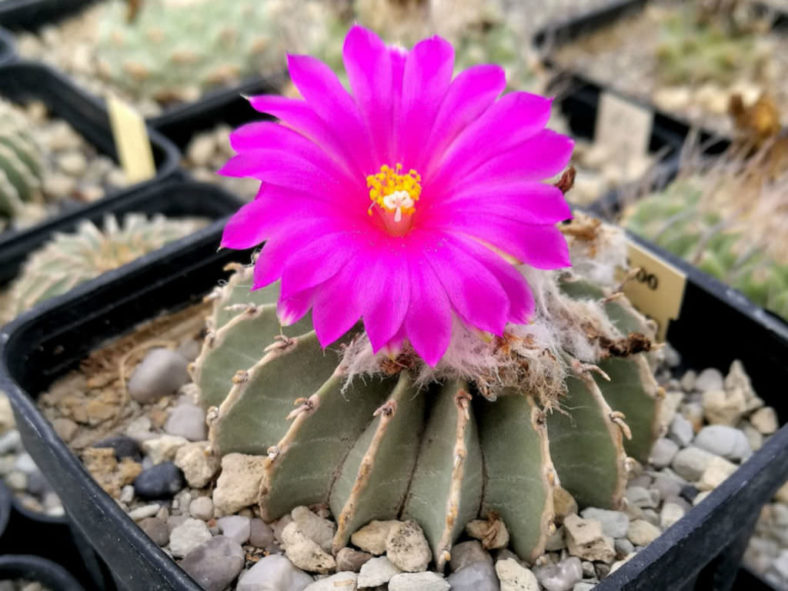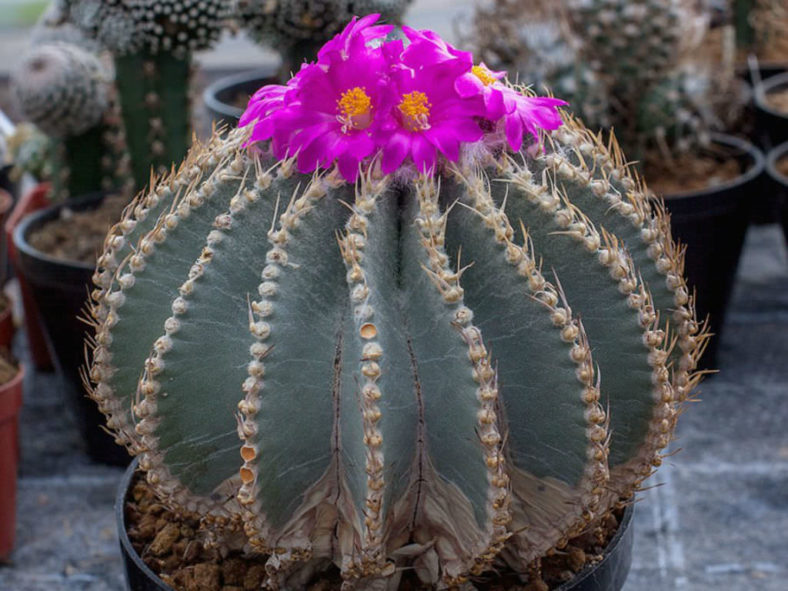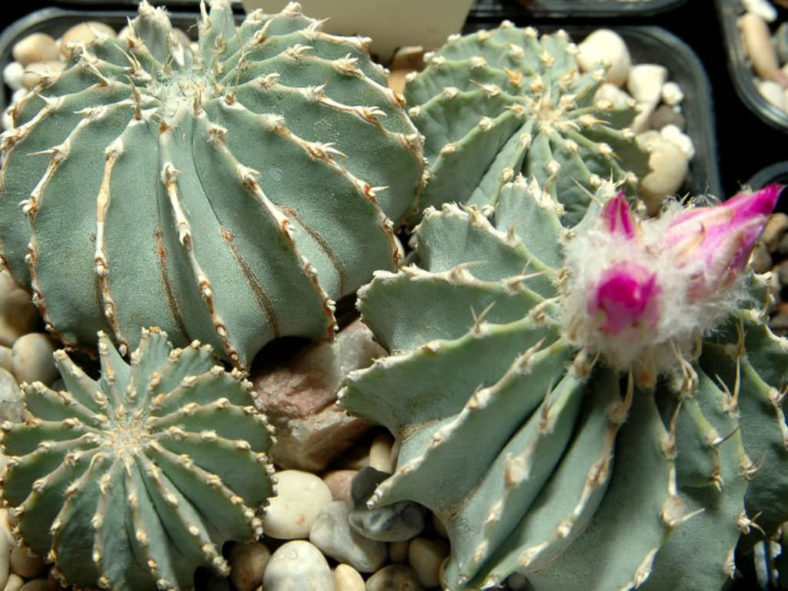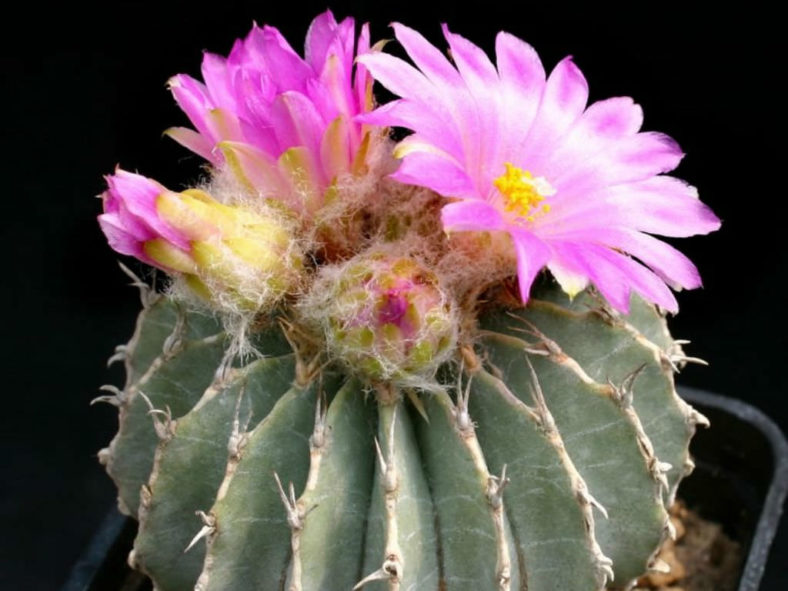Scientific Name
Geohintonia mexicana Glass & W.A.Fitz Maurice
Synonym(s)
Aztekium mexicanum, Echinocactus mexicanus
Scientific Classification
Family: Cactaceae
Subfamily: Cactoideae
Tribe: Cacteae
Genus: Geohintonia
Origin
Geohintonia mexicana is found only in Mexico (Nuevo León), growing on gypsum hills near Galeana.
Description
Geohintonia mexicana is a small cactus with a spherical, usually solitary stem with 18 to 20 well-defined ribs and a woolly apex. The gray-green stem can grow up to 4 inches (10 cm) in diameter. The areoles extend along the rib edges and bear curved, easily detached spines measuring up to 0.6 inches (1.5 cm) long.
The flowers are rich pink to magenta, appear from spring to fall, and open during the day. They can reach up to 0.8 inches (2 cm) in length and 1.6 inches (4 cm) in diameter.

Hardiness
USDA hardiness zones 9b to 11b: from 25 °F (−3.9 °C) to 50 °F (+10 °C).
How to Grow and Care
Overall, these are very attractive cacti for dish gardens or indoor displays. A collection of them is especially attractive, as they look like a collection of balls tossed upon the ground. However, it is critical never to let these cacti be exposed to prolonged periods in water or even very high humidity. They will suffer from rot in the presence of moisture. Echinocactus cacti are vulnerable to pests, including aphids, mealybugs, scale, and whitefly. Identify the infestation as early as possible and treat it with the leave toxic option.
It is best to repot at the beginning of the growing season or summer. To repot a cactus, ensure the soil is dry before repotting, then gently remove the pot. Knock away the old soil from the roots, removing any rotted or dead roots. Treat any cuts with a fungicide. Place the plant in its new pot and backfill it with potting soil, spreading the roots as you repot. Leave the plant dry for a week or so, then begin to water lightly to reduce the risk of root rot.
Learn more at How to Grow and Care for Echinocactus.
Links
- Back to genus Geohintonia
- Succupedia: Browse succulents by Scientific Name, Common Name, Genus, Family, USDA Hardiness Zone, Origin, or cacti by Genus
Photo Gallery
Click on a photo to see a larger version.


